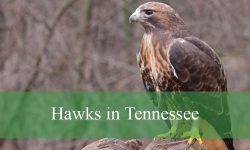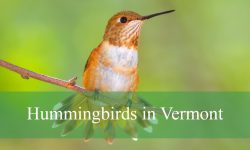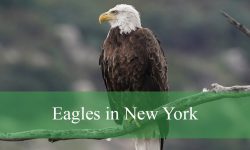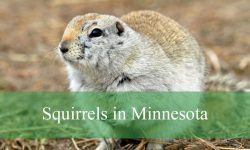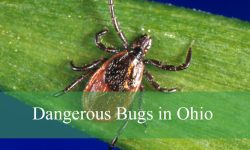Falcons can be seen across Indiana, from the tiny, colorful American Kestrel to the rare and powerful Peregrine Falcon. These birds of prey are admired for their speed, agility, and hunting skills.
Falcons in Indiana inhabit diverse environments, including open fields, river valleys, and urban areas. Observing them in flight provides a unique glimpse into their hunting behavior and natural grace.
This guide covers 5 types of falcons found in Indiana, with details on identification, size, behavior, and habitat. It is designed to help birdwatchers and nature enthusiasts recognize these raptors in the wild.
Common Falcons Found in Indiana
American Kestrel (Falco sparverius)
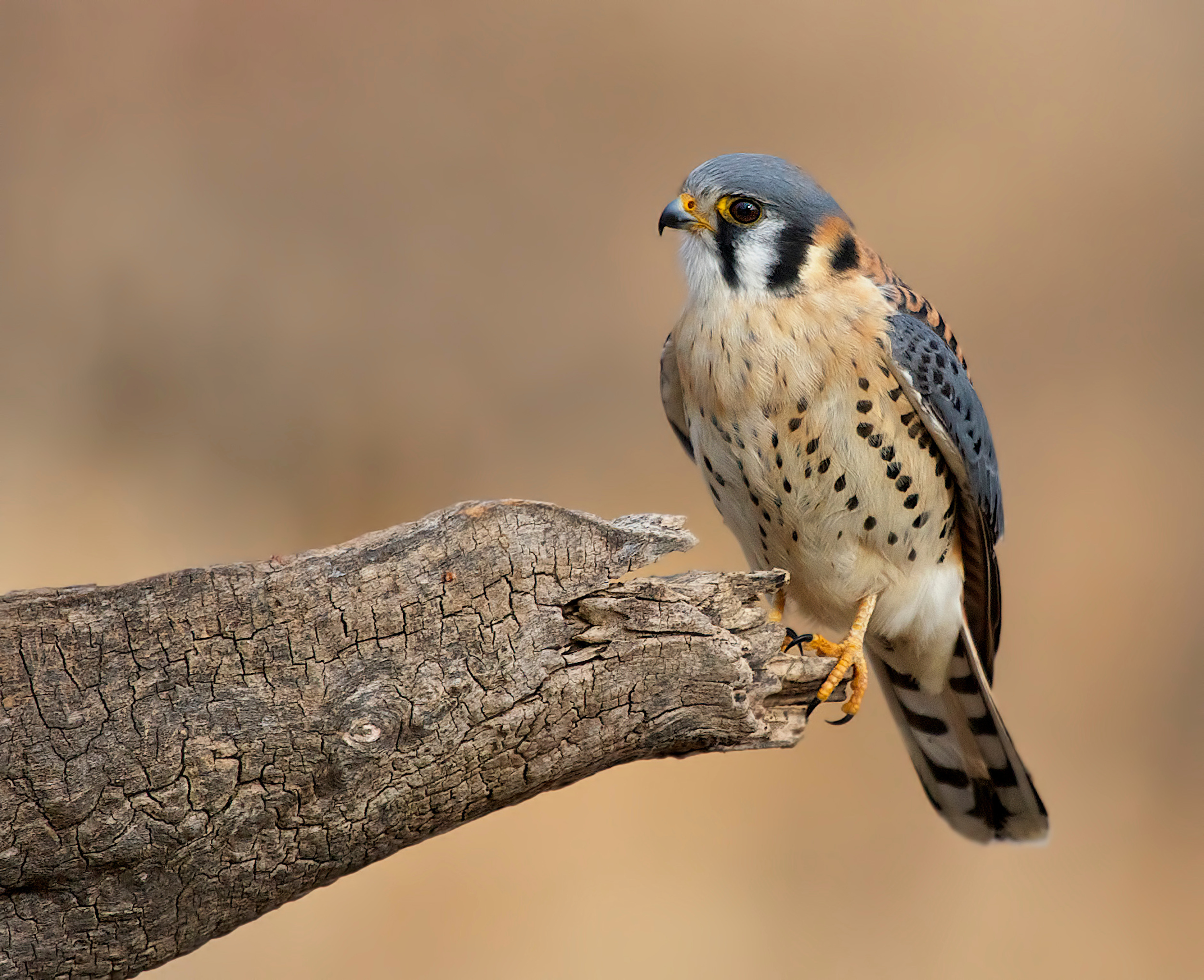
The American Kestrel is the smallest falcon in North America, measuring about 8–12 inches in length with a wingspan of 20–24 inches. Males display striking blue-gray wings and a rufous back, while females are more uniformly brown with dark barring. Both sexes have characteristic facial markings resembling a mustache and sideburns, making them relatively easy to identify in the field.
American Kestrels are highly adaptable and are often found in open fields, farmland, and suburban areas in Indiana. They perch on fence posts, wires, or trees, scanning for prey, and are commonly seen hovering in place before diving to capture it. These falcons are agile hunters, relying on both speed and keen eyesight.
Their diet primarily consists of insects such as grasshoppers and beetles, but they also hunt small mammals, birds, and occasionally reptiles. They hunt mainly during daylight hours, using a combination of hovering and perching to detect movement on the ground. Kestrels are known for their rapid, high-pitched calls, often heard during hunting flights.
Breeding occurs in spring, with kestrels nesting in tree cavities, nest boxes, or even abandoned woodpecker holes. A female typically lays 4–5 eggs, which hatch in about 28–30 days. Both parents care for the chicks until fledging, which occurs at roughly 4 weeks. Fun fact: American Kestrels are capable of hovering midair for several seconds while hunting, a behavior rarely seen in other small falcons.
Merlin (Falco columbarius)
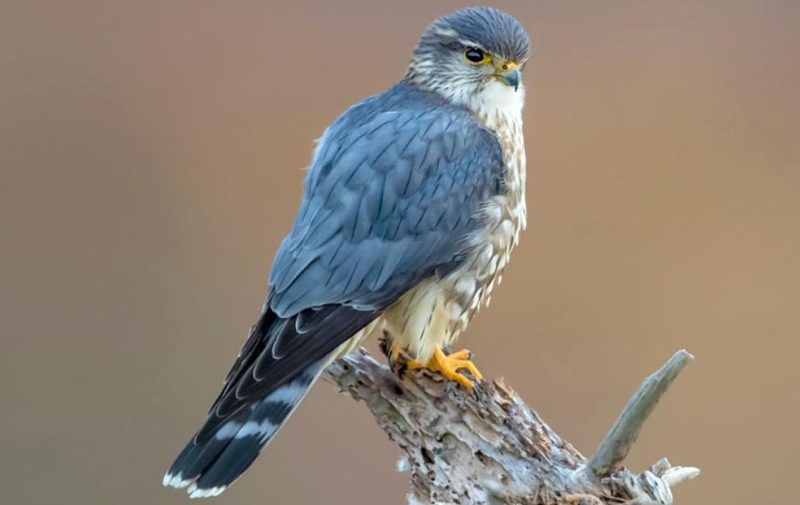
Merlins are small, compact falcons measuring about 9–13 inches long with a wingspan of 20–27 inches. They have dark slate-gray or brown upperparts and streaked underparts, with females and juveniles appearing browner than males. Their rapid, pointed flight and aggressive hunting style make them distinct from other Indiana raptors.
In Indiana, Merlins favor open woodlands, marsh edges, and suburban areas during migration or winter. They are highly maneuverable, often flying low over fields to surprise small birds. Unlike kestrels, Merlins rarely hover, relying instead on fast, direct chases to capture prey in midair.
Merlins mainly hunt small birds such as sparrows, starlings, and finches, but they may also eat insects when birds are scarce. Their hunting technique is fast and relentless, often involving multiple aerial pursuits. They are known to fiercely defend territories during the breeding season, though in Indiana, they are mostly winter visitors.
Breeding typically occurs in northern regions, with Indiana mostly seeing Merlins in migration. Nests are often built in abandoned nests of other birds or in tree cavities. Females lay 3–5 eggs, with incubation lasting around 28 days. Fun fact: Merlins are sometimes called “pigeon hawks” because of their preference for small birds in flight, especially during winter migration.
Peregrine Falcon (Falco peregrinus)
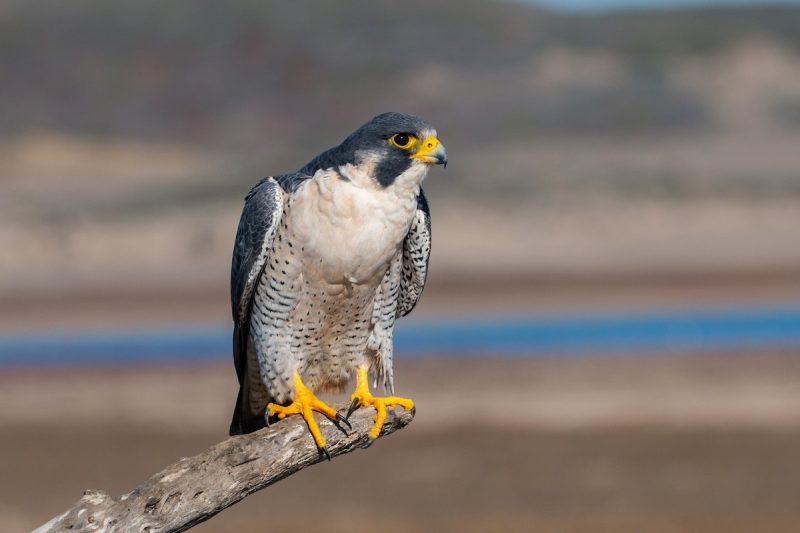
The Peregrine Falcon is renowned as the fastest bird in the world, reaching speeds over 200 mph during stoops. Adults measure 13–20 inches in length with a wingspan of 3–4 feet. They have slate-gray backs, barred underparts, and a black “helmet” marking on the head, making them unmistakable to birdwatchers in Indiana.
In Indiana, Peregrine Falcons inhabit urban areas, cliffs, and river valleys. They have adapted well to city life, nesting on tall buildings and bridges where pigeons and starlings abound. Their powerful flight allows them to cover large hunting territories efficiently, often swooping down from great heights to capture prey.
Peregrines primarily feed on medium-sized birds such as pigeons, ducks, and songbirds, which they catch in midair using their talons. They are apex predators in the bird world, rarely threatened by other animals. Hunting is most intense during early morning or late afternoon, with a stooping dive as their signature attack technique.
Breeding pairs are monogamous, with females laying 3–4 eggs on cliff ledges or building ledges. Eggs hatch after about 33 days, and fledglings leave the nest roughly 5–6 weeks later. Fun fact: Peregrine Falcons were once endangered in the U.S. due to pesticide use but have made a remarkable recovery, with Indiana now hosting both urban and rural populations.
Gyrfalcon (Falco rusticolus)
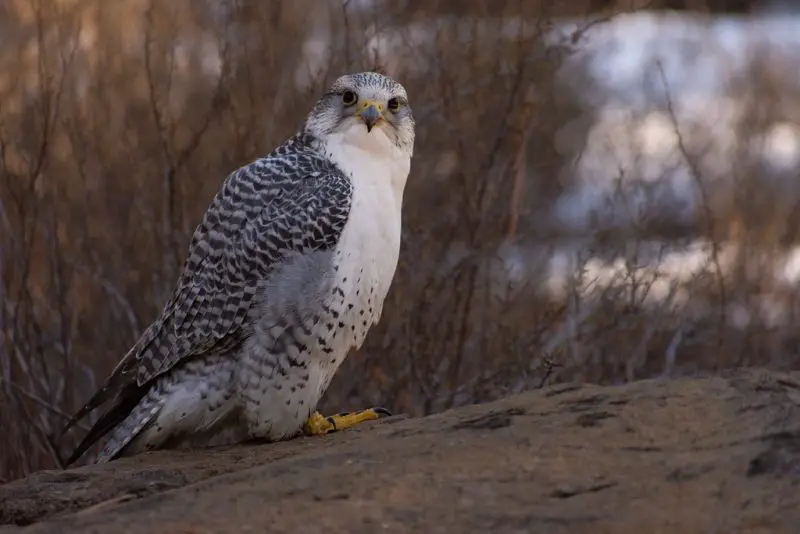
The Gyrfalcon is the largest falcon in North America, measuring 20–26 inches in length with a wingspan of up to 50 inches. They exhibit color morphs ranging from dark gray to nearly pure white, often with bold streaking or barring. This falcon’s robust size and heavy build distinguish it from other raptors in Indiana, though sightings are rare.
Gyrfalcons are primarily Arctic birds, only occasionally wandering into Indiana during winter. They prefer open tundra habitats in their native range, but when migrating south, they are often spotted in open fields, wetlands, and river corridors. Their flight is strong and direct, capable of traveling long distances while hunting or scouting for prey.
Their diet is mostly medium-sized birds such as waterfowl and gulls, but they also hunt small mammals like lemmings when available. Gyrfalcons are opportunistic and highly aggressive hunters, capable of overpowering prey larger than themselves. Their patience and strength make them formidable predators during winter incursions into Indiana.
Breeding occurs in the Arctic, so Indiana sightings are mostly non-breeding individuals. Fun fact: Gyrfalcons have been highly prized in falconry for centuries due to their size, strength, and hunting skill, and they are rarely seen in the wild in Indiana except during cold winter spells.
Prairie Falcon (Falco mexicanus)
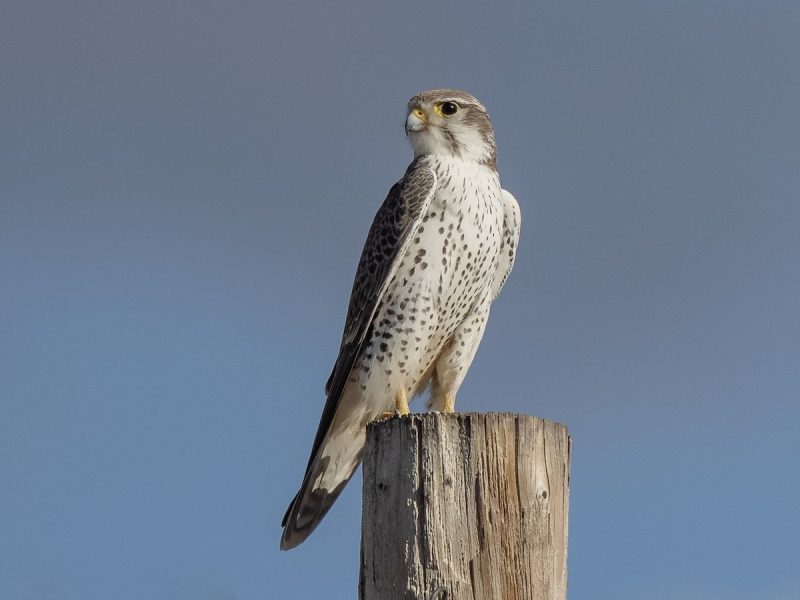
The Prairie Falcon is a medium-sized falcon, measuring 14–19 inches in length with a wingspan of 3–4 feet. Adults have pale brown upperparts and buffy underparts with heavy streaking. Their face features a dark “moustache” mark similar to other falcons, and their long, pointed wings allow fast and efficient flight across open terrain.
Although Prairie Falcons are more common in western U.S. grasslands, they occasionally appear in Indiana during migration. They prefer wide-open areas such as fields, prairies, and river valleys, hunting by flying low and chasing prey on the ground or in the air. Their agility and stamina make them excellent hunters across open landscapes.
Prairie Falcons feed mainly on small mammals like ground squirrels and prairie dogs, but they also hunt birds when available. They employ rapid pursuit and surprise attacks, often traveling long distances in search of food. Their behavior is aggressive, and they are capable of taking down prey nearly their own size.
Breeding occurs in western regions, with nests typically located on cliffs or rocky outcrops. In Indiana, sightings are mostly during migration in fall or winter. Fun fact: Prairie Falcons are known for their stamina, often covering over 50 miles a day while hunting, making them one of the most persistent falcons in North America.
Best Time and Places to Spot Falcons in Indiana
Falcons in Indiana can be observed throughout the year, but the timing and locations vary depending on the species. American Kestrels are the most widespread and can be seen year-round, especially in open fields, farmlands, and along roadsides. Early mornings and late afternoons are ideal for spotting them perched on fence posts or hovering in search of insects and small mammals.
Merlins are mostly winter visitors to Indiana. They are commonly observed from late fall through early spring in woodland edges, wetlands, and suburban areas. Watching areas with dense bird activity, such as near feeders or small flocks of sparrows and starlings, increases your chances of spotting these agile falcons in action.
Peregrine Falcons are versatile and can be seen year-round, but urban areas provide the most consistent sightings. River valleys, cliffs, and tall city buildings are prime observation points, especially during migration in spring and fall when they hunt large numbers of migratory birds. Early morning hunting flights often reveal their characteristic high-speed stoops.
Gyrfalcons and Prairie Falcons are rare in Indiana, with sightings mainly during the coldest winter months. Gyrfalcons are most likely to appear in open fields or along rivers during harsh winters when northern prey is scarce. Prairie Falcons may be spotted in wide open farmlands or prairie remnants during fall migration. Observers should focus on large, unobstructed landscapes to increase the chance of seeing these rare visitors.
FAQs About Falcons in Indiana
What types of falcons can be found in Indiana?
Indiana is home to several falcon species, including the American Kestrel, Merlin, and Peregrine Falcon. Rare visitors such as the Gyrfalcon and Prairie Falcon may also appear, mainly during winter or migration periods. Each species has unique characteristics, hunting behaviors, and preferred habitats within the state.
When is the best time to see falcons in Indiana?
The timing varies by species. American Kestrels can be seen year-round, while Merlins are mostly winter visitors from late fall to early spring. Peregrine Falcons are visible throughout the year but are especially noticeable during spring and fall migrations. Gyrfalcons and Prairie Falcons are rare, typically appearing in the coldest winter months.
Where are the best places to observe falcons in Indiana?
Open fields, farmlands, river valleys, and urban areas with tall buildings provide excellent falcon-watching opportunities. For Kestrels, roadside perches and open fields are ideal. Merlins prefer woodland edges and wetlands, while Peregrines often inhabit city skyscrapers, bridges, and cliffs. Rare visitors like Gyrfalcons and Prairie Falcons are best seen in wide open landscapes or along river corridors.
What do falcons eat in Indiana?
Falcons are primarily carnivorous. American Kestrels feed on insects, small mammals, and occasionally birds. Merlins target small birds such as sparrows and finches. Peregrine Falcons hunt medium-sized birds like pigeons and ducks. Gyrfalcons and Prairie Falcons prey on larger birds and mammals when available, using their strength and speed to capture agile prey.
How can I identify different falcon species in Indiana?
Identification depends on size, coloration, and flight style. American Kestrels are small with colorful plumage and characteristic facial markings. Merlins are compact, dark, and fast-flying. Peregrines are larger with slate-gray backs and black “helmet” faces. Gyrfalcons are bulky and can range from white to dark gray, while Prairie Falcons have pale brown streaked plumage suited for open terrain.
Are falcons endangered or protected in Indiana?
Peregrine Falcons were once endangered in the U.S. due to pesticide use but have since made a significant recovery. All falcon species are protected under federal and state laws, making it illegal to harm, capture, or disturb them without proper permits. Conservation efforts, including nest box programs for Kestrels and urban Peregrines, have helped stabilize populations in Indiana.
Can I attract falcons to my property in Indiana?
While you cannot easily attract wild falcons, providing open spaces, avoiding pesticide use, and installing nest boxes for American Kestrels may increase sightings. Peregrines often inhabit urban areas naturally, where tall buildings and abundant prey like pigeons provide suitable habitat.

